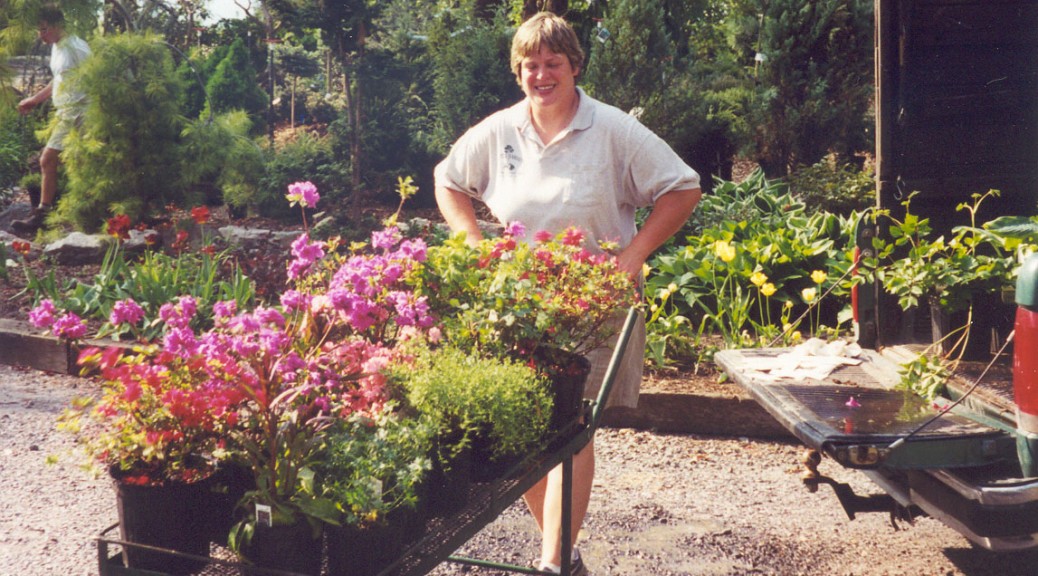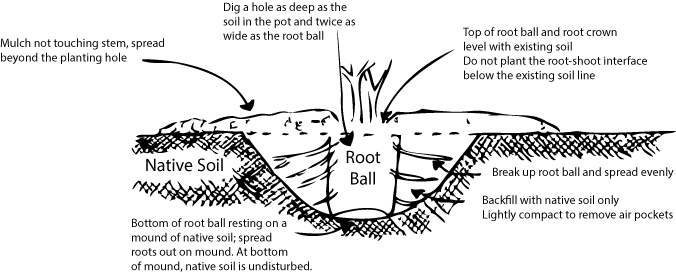Quick Guide to Plant Installation and Care
1. Make sure you know what conditions your plant needs to thrive. Our plants are kept in optimal conditions while at the nursery. It is up to you to choose one right for your landscape. Always feel free to ask advice!
2. Install your new plant correctly:
Dig a hole as deep as the plant’s root ball and twice as wide, as shown in the diagram below.* The crown of the plant (where the roots and trunk meet) should be at or slightly above the soil surface.
If roots are circling tightly in the pot, tease them out by hand or cut them in a few places if necessary.
Loosen any burlap tied around the crown. You may remove it if you desire, but this is not necessary as the burlap will dissolve in the soil. Be sure not to break the rootball while planting.
Use the native soil to backfill the hole. If your soil is poor, mix amendments with the native soil. Amendments for clay soil include clay-buster (gypsum), manure, compost and peat moss. For sandy soil, use peat moss and organic matter.
Firm the soil around the rootball, but don’t compact. Mulch the area, using a 2-3” layer of high-quality mulch (at least double-ground). You may fertilize at this time, but it is not necessary.
Stake your plant if necessary. Remove any stakes after 1 year.
3. Water, Water, Water. Your new plantings will need an inch of water per week for the first year. IF YOU FAIL TO WATER YOUR PLANTS, THEY WILL DIE. A PLANT THAT HAS DIED DUE TO DROUGHT IS NOT COVERED UNDER OUR GUARANTEE.
In the heat of summer, you may have to water daily. Don’t forget to keep watering during fall! Autumn can be a hot, dry time and plants still need water then. Use soaker hoses and a timer system to save time and money for large installations. Water not only under the drip line of the plant, but also several feet out from this. Otherwise, dry soil will wick away moisture from roots.
Try to water early in the morning to prevent evaporation.
Mulch your planting to hold moisture in the soil. Do not let mulch touch the crown or trunk of your plant! This can lead to crown rot and burning.
If a drought is declared, keep watering. New plantings are exempt from watering restrictions during a drought.
Before you plant a landscape, you should have a plan for keeping your plants watered. This includes making arrangements for times when you will not be at home to water.
You should follow this plan for the first year following installation. After that, your plants should be able to fend for themselves.
4. Protect your investment. Control insects, animals and disease using IPM (Integrated Pest Management) strategies. Protect them from vandalism and abuse. Fertilize yearly.
5. Enjoy your Plants!
*”Planting Tips.” Better Ground (c) 2012 Snohomish Conservation District.


